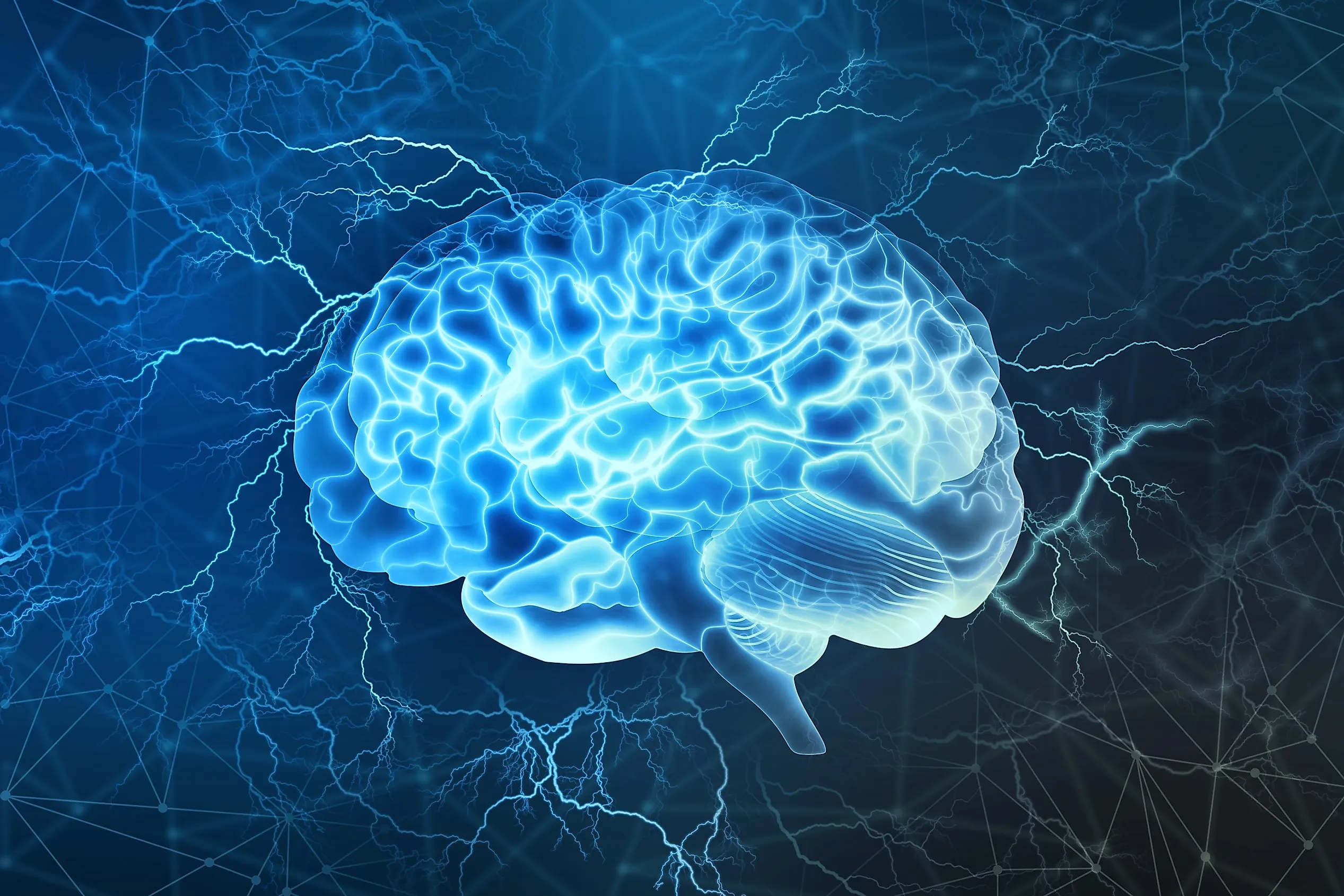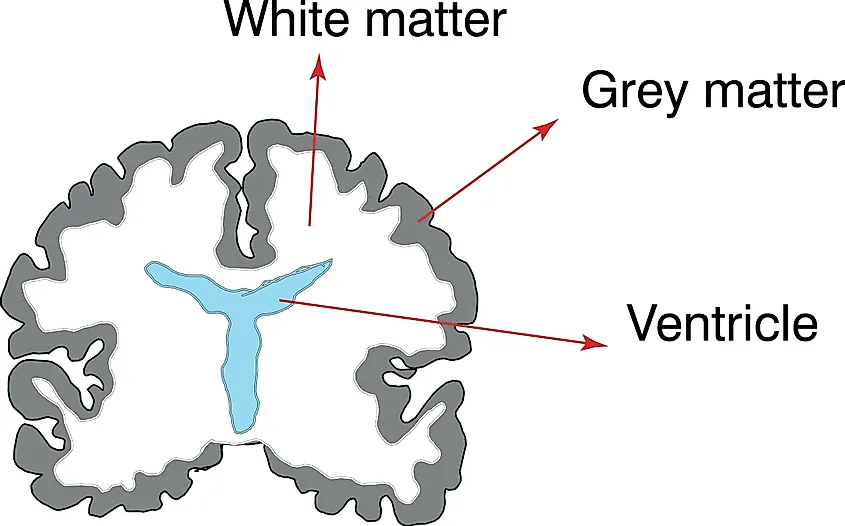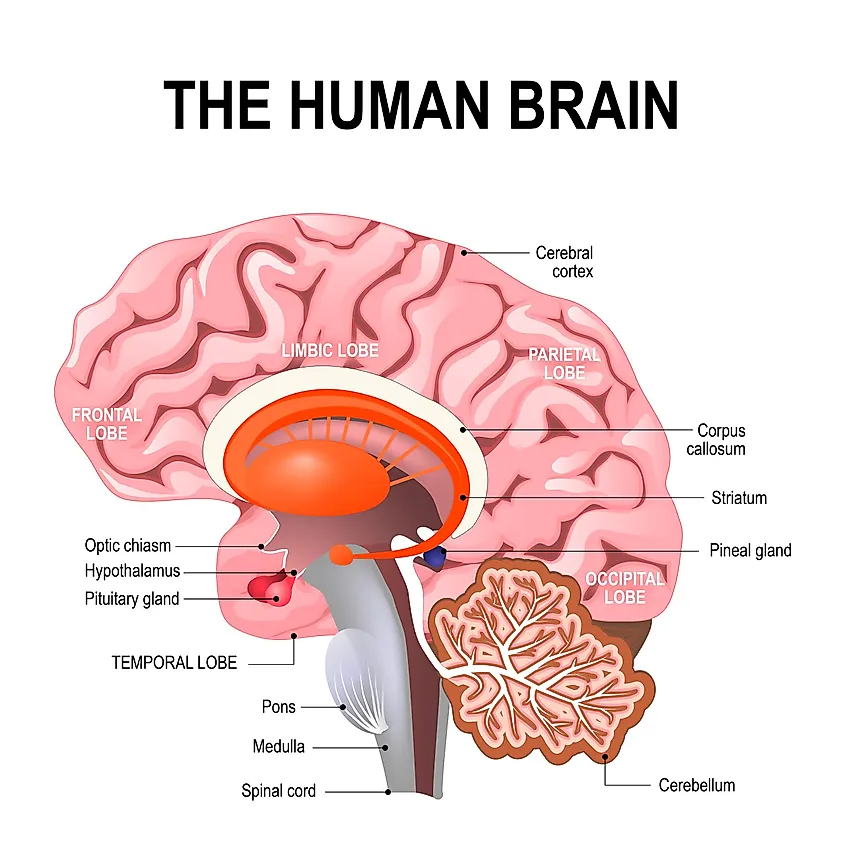
What Are Grey Matter And White Matter?
The brain is an incredibly complex organ that controls behavior and regulates the body’s physiological functions. Essentially, the brain is the control center of the body. However, the brain alone cannot do much. It needs the spinal cord to communicate and receive information from sense receptors. Together, the brain and spine make up the central nervous system (CNS). Spread throughout the CNS are contrasting regions of gray and white matter.
Gray Matter

Gray matter enables control of movement, memory, and emotion. It consists primarily of neuronal cell bodies, which process and release information. This high concentration of neuronal cell bodies gives the tissue its pinkish-gray color, hence the name. The cerebrum and cerebellum are regions of the brain which have an external layer of gray matter. The cerebrum is the largest part of the brain and handles higher functions like sensory interpretation, emotions, learning, and fine motor control. Under the cerebrum is the cerebellum, which monitors and regulates movement as well as maintains posture and balance. Inner sections of the brain also contain gray matter in groups of neurons called nuclei, which are embedded in white matter.
Gray matter extends from the brain into the spine, creating a hornlike structure through the inside of the spinal cord. This extension makes signalling more effective. Gray matter consumes approximately 3-4 times more oxygen than white matter.
White Matter

While gray matter regions process information, white matter areas act as communication channels between gray matter and the rest of the body. Unlike gray matter, white matter is in the deeper tissues of the brain. It contains axons (nerve fibers), which are extensions of nerve cells (neurons). These axons are sheathed in a fatty insulating protein called myelin. Myelin improves signal transmission along axons and protects them from injury. Furthermore, myelin gives the white matter its color and name. In the spinal cord, white matter is distributed around the gray matter.
Conclusion
In sum, the central nervous system has two types of tissue: gray and white matter. These regions contrast one another. Gray matter is located externally in the brain, while white matter is embedded internally. An opposing pattern is observed in the spinal cord; gray areas are surrounded by white matter.
Gray matter handles information processing, whereas white matter serves as a communication channel. Both regions are named for the appearance of their tissue. In gray matter, there are a large number of neuronal cell bodies, which causes it to appear pinkish gray. In contrast, white matter is mainly composed of myelinated axons, which gives it its lighter color.











